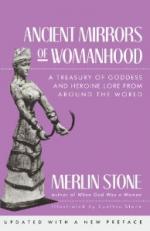|
This section contains 155 words (approx. 1 page at 400 words per page) |

|
Chapter 68, Shakti Summary and Analysis
Shakti literally means power. Her accounts come primarily from the Tantras. Shakti reverence still exists today in non-Aryan areas of India. Shakti appears as a serpent image—as the serpent of Kundalini Yoga, and as the serpent rising to the Ajna Chakra of the forehead. These images may be compared to the Dravidian Naga serpent deities as well as the serpent symbolism of Egypt.
Shakti, represented by Devi, creates and nourishes all that exists. She is the Maha Devi of the 1,000 petalled lotus. Shakti is the power and energy; consciousness and bliss found in all beings. She is the infinite Cosmic Energy. She is omnipotent and can never be completely known. There are many worlds, and a goddess or god rules each, but Shakti is the One Great Mother of all existence. Even the gods and goddesses bow...
(read more from the Chapter 68, Shakti Summary)
|
This section contains 155 words (approx. 1 page at 400 words per page) |

|




